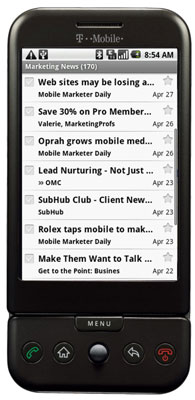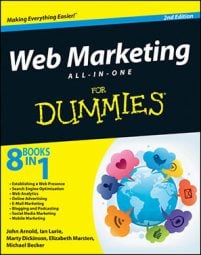Your e-mail Subject line is a line of text that gives your audience a hint at the content in your web marketing e-mail. The most effective Subject lines are those that prompt your audience to open your e-mails to look for specific information.
Consistently coming up with good Subject lines is tough because most e-mail programs display only the first 30 to 50 characters, which gives you a limited amount of text to get your point across. In fact, most mobile devices only show the first 20–30 characters.

Save the information highlighting the benefits of your products or services for the body of your e-mail and use your Subject line to tell your audience why to open your e-mail immediately. Stating the immediate benefit of opening the e-mail creates a sense of urgency and tells your audience that your e-mail is important.
Creating a sense of urgency with your text helps to increase viewer openings, but urgency can easily wear off if your Subject lines make urgent statements without hinting at the content in your e-mail. For example, Subject lines such as Only 10 left or Sale ends soon don’t communicate the main subject of your e-mail — and are urgent only when they are used infrequently.
The following examples show how you can create urgency while still hinting at the main idea of the message. In each example pair, the first is a Subject line without urgency, and its mate is a revised Subject line with added urgency:
Not so good: What you need to know about Denver real estate
Better: What you need to know now about Denver real estate
Not so good: Flower sale
Better: Flower sale — early entry information
Not so good: Seminar invitation
Better: Last chance to register
Not so good: Tips for remodeling your kitchen
Better: Tomorrow’s tips for remodeling your kitchen today
Test your Subject lines by sending the same e-mail with different Subject lines to a small sample of your list to determine which Subject line is going to result in the most openings.
For example, if you have a list of 1,000 subscribers, send your e-mail to 100 list subscribers with one Subject line and to a different 100 list subscribers with another Subject line. Wait a day or two, and then send your e-mail to the remaining 800 with the Subject line that received the highest number of openings.
You might want to look at your junk folder occasionally to see what the spammers are up to so that you don’t inadvertently copy some of their Subject line techniques. Here are some Subject line mistakes to avoid:
-
Excessive punctuation, such as lots of exclamation points or question marks
-
Symbols, such as dollar signs and asterisks
-
Words with all capital letters (usually perceived as yelling)
-
Your recipient’s first name in the Subject line
-
Using RE: unless the e-mail is really a response to a previous e-mail Subject line
-
A blank Subject line
-
Vague Subject lines that attempt to trick the reader into opening your e-mail. For example
-
Hey you
-
Check this out
-
RE:
-
Personal information
-
Hi!
-
The current CAN-SPAM laws prohibit Subject lines that are “likely to mislead a recipient, acting reasonably under the circumstances, about a material fact regarding the contents or subject matter of the message,” so make sure that your Subject lines clearly and honestly represent the content in every e-mail.

